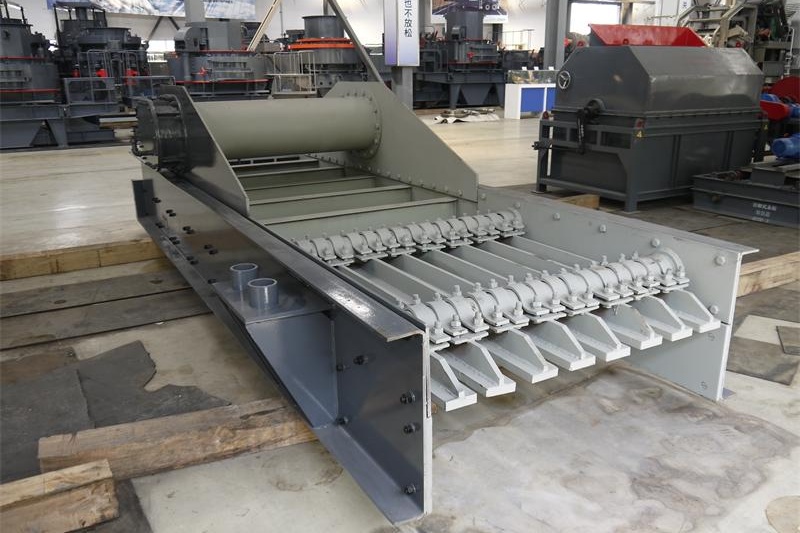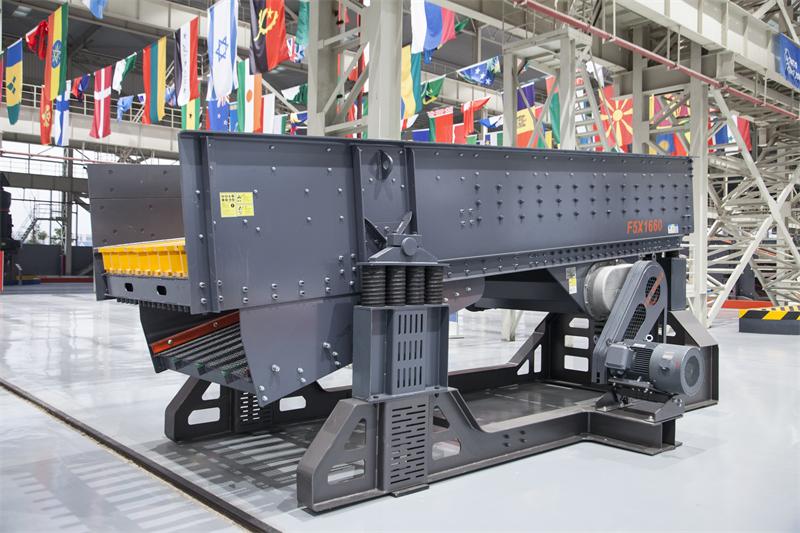
Efficient feeding solutions are pivotal in optimizing granite processing workflows, particularly in ensuring consistent material flow to crushers and reducing downtime. The GF high-efficiency vibrating feeder has emerged as a critical component in mobile crushing stations and semi-fixed crushing lines. This article explores the technical foundations, operational advantages, and practical implementation strategies of the GF vibrating feeder, aiming to guide industry professionals in upgrading their crushing operations.
The GF vibrating feeder specializes in accommodating large feed sizes, with a maximum inlet dimension reaching 1200 mm, effectively reducing the need for pre-processing. Its processing capacity ranges from 150 to 800 tons per hour, empowering operations to meet varying production demands. What sets the GF feeder apart is its unique dual-layer screening structure, which simultaneously facilitates material feeding and preliminary screening, thus enhancing throughput while minimizing the risk of material clogging.
| Key Specification | Parameter |
|---|---|
| Maximum Feed Size | 1200 mm |
| Processing Capacity | 150 - 800 tons/hour |
| Screening Layers | Dual-layer structural design |
| Vibration Frequency | Variable, adjustable up to 1000 rpm |
The operational core of the GF vibrating feeder lies in its adjustable vibration excitation force, which directly controls the material flow rate on the feeder tray. By fine-tuning the amplitude and frequency of vibration motors, operators can achieve precise feed volumes aligning with crusher capacity and production targets. This modulated vibration not only stabilizes the feeding process but also mitigates equipment wear by reducing material impact intensity.
Typical operational vibration frequencies range between 600 to 1000 revolutions per minute (rpm), with amplitude adjustments between 1.5 to 3.0 mm. Such adaptability ensures optimal grading of feed materials, crucial for maintaining crusher throughput and prolonging lifespan.
Implementing the GF vibrating feeder in a mobile crushing station processing hard granite demonstrated a 12% increase in output capacity while reducing feed-line blockages by over 30%. Additionally, the feeder’s robust anti-impact design reduced maintenance downtime by approximately 20%.
In semi-fixed crushing production lines, dual-layer screening enabled preliminary sorting, reducing crusher wear rates by nearly 15% as coarse materials were pre-separated. These enhancements translated into significant cost savings and improved operational continuity.
The GF vibrating feeder's adaptability across different capacity ranges and its robust design framework enable tailored feeding solutions that align with specific granite processing needs, driving sustainability and efficiency.

Selecting the right GF vibrating feeder model requires assessing key factors such as expected feed size, material abrasiveness, production volume, and crusher compatibility. Operators should prioritize models offering adjustable vibration parameters and dual-layer screening when handling abrasive granite aggregates.
Maintenance tips include:
These practices collectively enhance equipment longevity and production stability.

